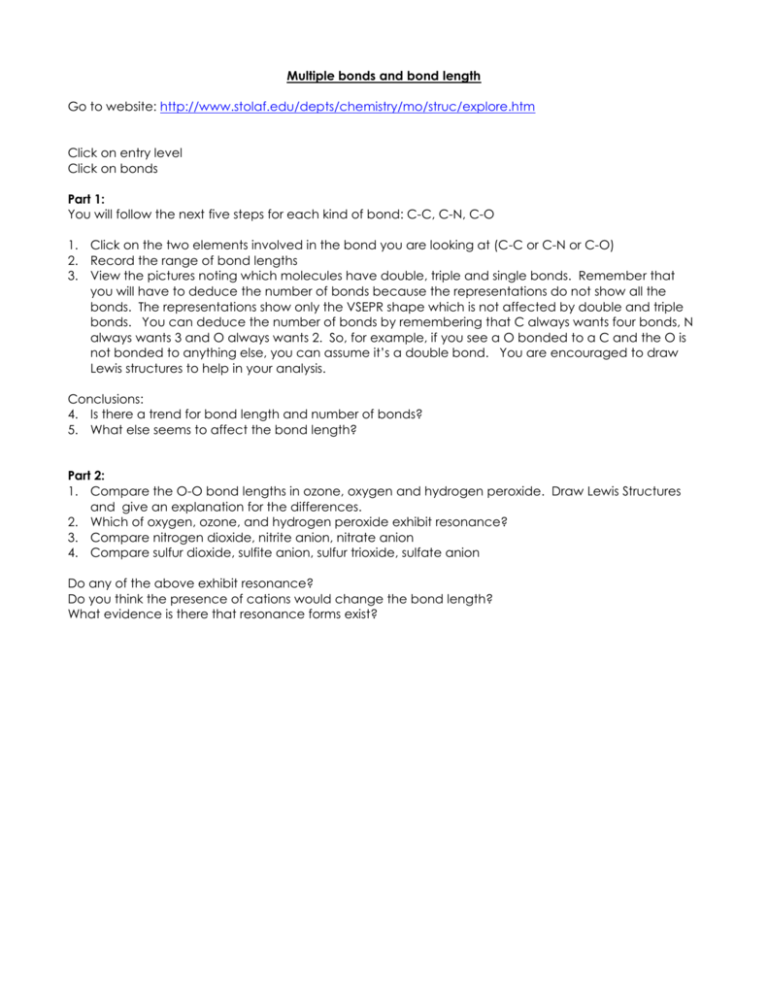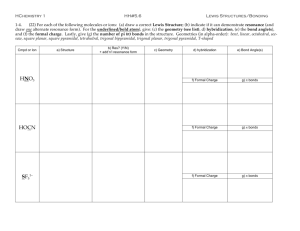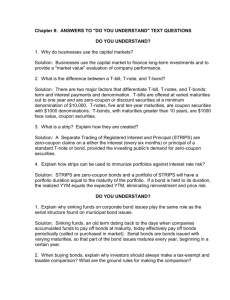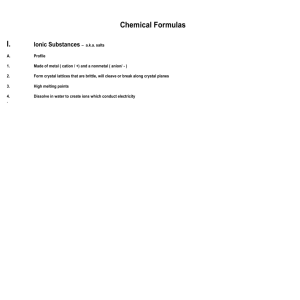Multiple bonds and bond length
advertisement

Multiple bonds and bond length Go to website: http://www.stolaf.edu/depts/chemistry/mo/struc/explore.htm Click on entry level Click on bonds Part 1: You will follow the next five steps for each kind of bond: C-C, C-N, C-O 1. Click on the two elements involved in the bond you are looking at (C-C or C-N or C-O) 2. Record the range of bond lengths 3. View the pictures noting which molecules have double, triple and single bonds. Remember that you will have to deduce the number of bonds because the representations do not show all the bonds. The representations show only the VSEPR shape which is not affected by double and triple bonds. You can deduce the number of bonds by remembering that C always wants four bonds, N always wants 3 and O always wants 2. So, for example, if you see a O bonded to a C and the O is not bonded to anything else, you can assume it’s a double bond. You are encouraged to draw Lewis structures to help in your analysis. Conclusions: 4. Is there a trend for bond length and number of bonds? 5. What else seems to affect the bond length? Part 2: 1. Compare the O-O bond lengths in ozone, oxygen and hydrogen peroxide. Draw Lewis Structures and give an explanation for the differences. 2. Which of oxygen, ozone, and hydrogen peroxide exhibit resonance? 3. Compare nitrogen dioxide, nitrite anion, nitrate anion 4. Compare sulfur dioxide, sulfite anion, sulfur trioxide, sulfate anion Do any of the above exhibit resonance? Do you think the presence of cations would change the bond length? What evidence is there that resonance forms exist?











